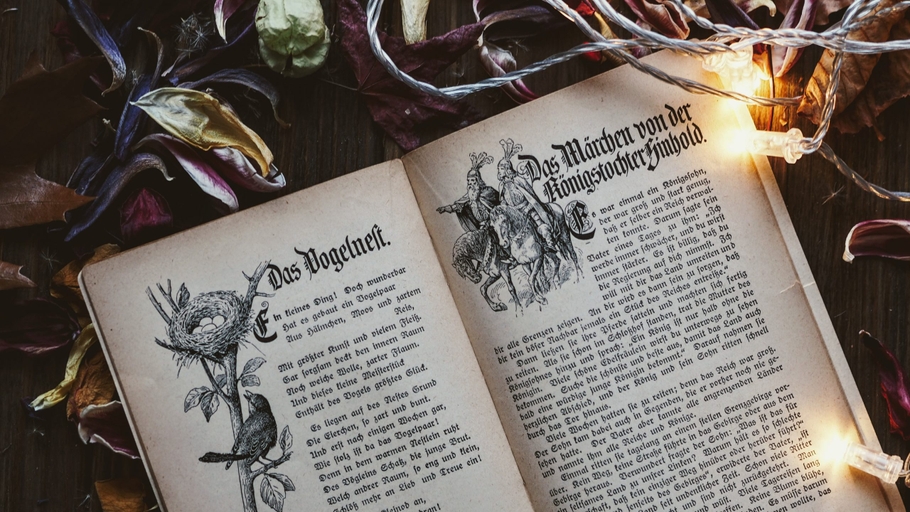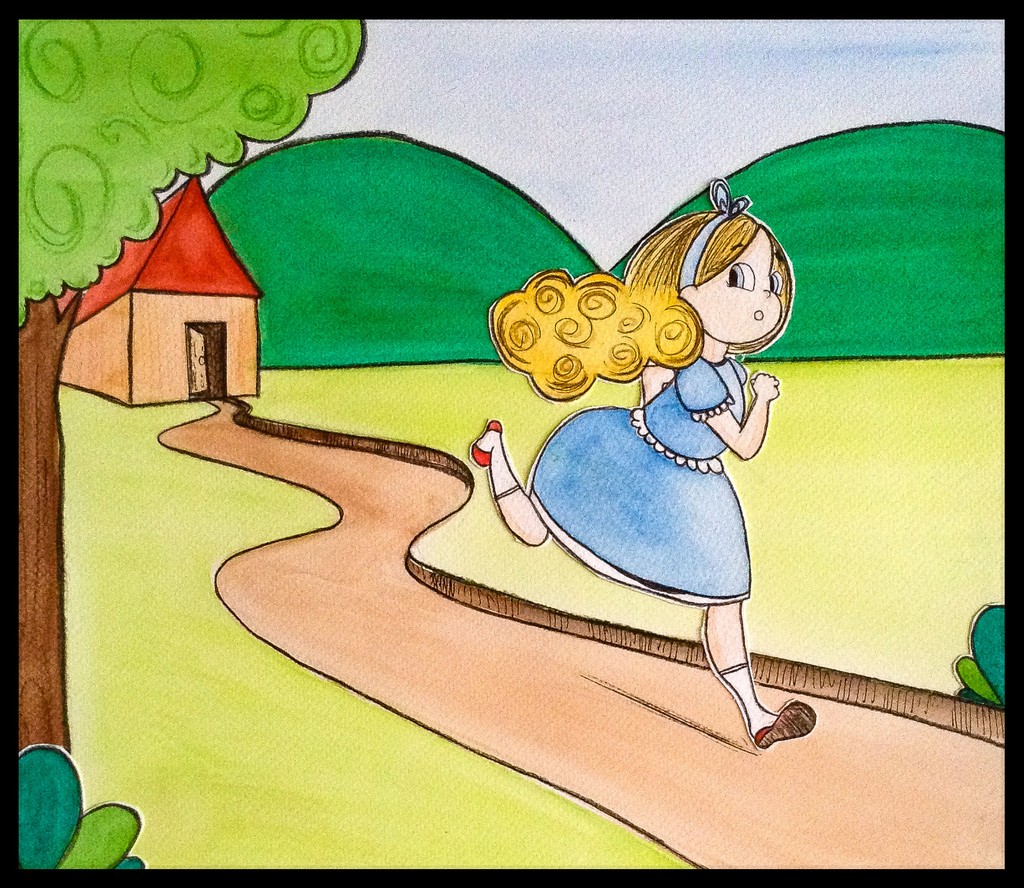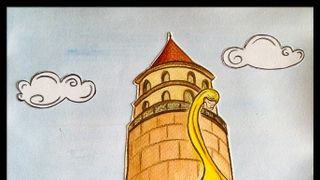“Once Upon A Time…”
We are all familiar with these four words. When we hear them, no matter what our age is, we instinctively know that we are about to hear a fairy tale.
Fairy tales have the ability to transport us back to our childhood, and they contain universal themes that are timeless. Even in this day and age of technology, children listening to a fairy tale for the first time will be transported to a magical place, and the wonder on their little faces is testimony to their power.
But where do these classic parables come from? When and where did they originate, and most importantly, why?
Timeless Themes in an Oral Tradition
Historians and anthropologists alike agree that fairy tales are as old as humanity itself. Their themes and motifs are commonly shared in stories across the globe. Themes such as greed, jealousy, and love feature over and over again in fairy stories from all over the world.
Imagine a time when literacy was low, and only the upper classes were taught how to read and write. The only way for common folk to share knowledge and folklore was via speaking and listening.
These stories would have been told around the fire at night by older members of a family or community, listened to and remembered by their children and grandchildren, who would in turn tell these stories to their own families. This is how fairy tales were passed down through the ages.
That is, until Charles Perrault and the Brothers Grimm appeared on the literary landscape of the Western world.
Charles Perrault: the ‘Father of Fairy Tales’
Charles Perrault was a French writer and academic who, in 1697, published a volume of children’s tales which he called “Stories or Tales from Times Past, with Morals”. Some of the stories in this publication are (at least) centuries old. For example, Little Red Riding Hood, the story of a little girl dressed in a red hooded cape who goes to visit her ailing grandmother and is tricked by a beguiling wolf along the way, was known in France as far back as the 10th century[1].
The Brothers Grimm
Born in the late 18th century in Germany, Jacob and Wilhelm Grimm were collectors and curators of German and European oral folk tales. More importantly, they wrote these stories down on paper, thus preserving them for posterity.
These two brothers were university-educated, and they lived during the days of Romanticism, when there was a revival in the interest in anything associated with the medieval period. This interest extended to fairy tales. The Grimm Brothers methodologically set out to record and catalogue stories which they believed to be of significant cultural value[2].
Some of these well-loved stories included Sleeping Beauty, Snow White, Rumpelstiltskin, and Little Red Riding Hood, to name but a few.
Jacob and Wilhelm invited story-tellers to come and share their knowledge, and this, combined with their own research, culminated in a compilation which they called “Children’s and Household Tales”, which was first published in 1812[3].
The Psychology of Fairy Tales
The original versions of these children’s tales were graphic and frightening, and not what audiences today would consider appropriate for small children.
However, these stories had a purpose, which was to act as a cautionary tale to the youngsters who heard them, and to instil morals and good values in the listener.
Take Hansel and Gretel, for example. These two unfortunate children are cast out by their evil step-mother and abandoned in the forest. They eventually find their way to a house made of gingerbread, inhabited by an old woman. She pretends to offer the children help, but she has a hidden agenda, which is to eat them!
What would the lesson be for wide-eyed and impressionable children listening to this tall tale, from the safety of their mother’s lap? Boys and girls would subconsciously understand the lessons being offered in this story: 1) Do not be greedy (for it is Hansel and Gretel’s desire to eat the old woman’s gingerbread house that gets them into trouble), and 2) Be wary of strangers, and 3) Not all that glitters is gold.
The forest itself looms large in both this and several other fairy tales. The forest is often depicted as a dark and sinister place, full of foreboding. Children who travel through the forest alone are vulnerable to those who would do them harm. The presence of the forest in fairy tales would have acted as a warning to the children of villagers all over Europe that it was a place where danger lurked. Given that robbers and outcasts had always dwelled in Europe’s forests, this aspect of fairy tales makes sense. Children would have heeded this warning seriously and stayed away, which is precisely what their parents would have wanted.
Fairy Tales: Where the Ordinary and the Extraordinary Meet
Fairy tales, also referred to as ‘folk tales’, or ‘wundermärchen’[4] (German for ‘wonder tale’) follow a regular pattern in that they involve ordinary people in ordinary places, who encounter extraordinary people, objects, and events.
Consider the story of Rumpelstiltskin, for example. The miller’s daughter is an ordinary (albeit pretty) young woman. Her father tells the king that she can spin straw into gold, which of course is a superhuman feat. Enter the eponymous Rumpelstiltskin, a magical little man who spins the straw into gold for her. In this fairy tale we have an ordinary person in an ordinary setting, who meets an extraordinary being who can achieve magical feats.
This combination of the everyday and the fantastical make these stories more accessible (if not entirely believable) to the audience.
Now let’s take a look at the origins, oral history, and early publications of another well-known and beloved fairy tale, Beauty and the Beast.
Beauty and the Beast
A study conducted by anthropologist Dr. Jamie Tehrani at the University of Durham found that this story could be traced back as far as 4,000 years. Tehrani worked with the University of Lisbon’s folklorist Sara Graca da Silva to develop a theory that this story, and other fairy tales, have been shared orally in an now-extinct Indo-European language[5].
Beauty and the Beast was first transcribed into print in 1740 by Gabrielle Suzanne Barbot de Villeneuve, which predates the Grimm Brothers’ storybook by 70 years.
However, this author was not recording a 4,000 year-old story. Rather, she took her inspiration from a real life married couple – Petrus and Catherine Gonsalvus.
Petrus Gonsalvus was a 16th century man who carried what today is known as the ‘Werewolf Gene’. Given his hairy appearance, he was treated as a curiosity and ended up in the French royal court. The queen, Catherine de Medici, thought it would be an interesting experiment to marry Petrus to one of the ladies of the court, to see if their children would have the same facial hair as their father[6]. Villenueve is said to have taken her inspiration from this real-life couple.
In Villeneuve’s story, there are no magical clocks or candelabras (these are later additions courtesy of Disney), but there are certainly some other solid fairy tale elements at play. The heroine has two evil older sisters. Evil older women who are jealous of young women and their beauty are a constant motif in fairy tales. The Beast is under a curse, which can only be broken by the true love bestowed upon him by the heroine. Curses and spells being broken by true love are also common features of fairy tales. The morals of this story are clear – love triumphs over all, beauty is synonymous with virtue, and do not judge a book by its cover.
The theme of judgement is also apparent in another classic and beloved fairy tale, Goldilocks and the Three Bears.
Goldilocks and the Three Bears
In 1831, an English woman called Eleanor Mure recorded the story of Goldilocks for her nephew. She based her writings on an oral story that had been told in her family for generations. However, unlike the story that audiences recognise today, this first written version of the much older story featured three bears of equal size, and instead of a little girl, the porridge thief was an old woman! These bears are not family, but rather, friends who live together. They find that someone has drunk all of their milk, and when they catch the culprit, they punish her in the most graphic of ways, by burning her, drowning her, and impaling her. Mure’s story was simply entitled “The Story of Three Bears”, with no mention of a girl with golden hair.
Six years later, an Englishman by the name of Ricahrd Southey released another version of Goldilocks, which he called “The Three Bears”. Southey had been told this fairy tale when he was a boy by his uncle, who was illiterate. Like Eleanor Mure, the spoken story of the three bears and their antagonist was part of their family tradition. It was in this iteration that the bears were assigned their various sizes – Wee, who would go on to become Baby Bear, Middle, who we now know as Mama Bear, and Great (‘Papa’) Bear. The antagonist remains an old woman, but in this version she escapes the bears before they can punish her for her intrusion.
The next version of this fairy tale was published in 1850 by Joseph Cundall, and in this version the old woman has transformed into a little girl. Yet her hair is still not golden, but rather, silver. Her moniker is Silver Hair. In subsequent versions of Cundall’s story, this girl is referred to as Silver Locks and Golden Hair.
It was not until 1904 that the antagonist of this tale was named ‘Goldilocks’, when she made an appearance in an anthology of children’s stories called “Old Fairy Tales for Children”[7].
The talking bears in Goldilocks are an example of a common motif in fairy tales, the anthropomorphic animal. Other notable examples are the wolf in Little Red Riding Hood, and the pigs in The Three Little Pigs. By giving animals the human ability to speak, storytellers of yore were able to communicate effectively with the audience whilst retaining the characteristics of the animal’s true nature. For example, the wolf in Little Red Riding Hood can mimic the voice of the heroine’s grandmother, but it’s desire to eat her betrays its true animalistic nature.
And what moral lesson does Goldilocks and the Three Bears teach us? In the original version, the punishment meted out by the bears to the old woman makes it clear that stealing is not acceptable, and thieves will be harshly dealt with. It also creates an interesting juxtaposition in that the child acts in feral ways (stealing food and breaking furniture), and the animals are the civilised ones – cooking porridge and judging Goldilocks for her crimes. Perhaps the lesson here is that deep down each and every person has an uncivilised side, even a seemingly sweet little girl.
Happily Ever After…
Perhaps the most pleasurable part of listening to a fairy tale is the knowledge that, despite the hardships that their protagonists endure at the hands of evil-doers and supernatural forces, good will prevail and there will be a happy ending.
Beauty kisses the Beast and the spell is broken. He reverts back to his human form and they live happily ever after. Goldilocks learns a valuable lesson that stealing is wrong, and she and the bears become friends.
The happy ending is an important aspect of fairy tales. It means that wrongs have been righted, and that the natural order of things has been restored – provided that everybody is good and kind, and plays by the rules.
We are fortunate today that scholars such as Charles Perrault and the Grimm Brothers took the time to write these wonderful and timeless tales down. In this day and age of busy and cluttered lives, the simple telling of a fairy tale to an enraptured child is something that can still be treasured and enjoyed. The themes and motifs in these stories are as old as humankind itself, thus their messages are still relevant today.
[1] Origjanska, Magda. “The Dark Original Story of Little Red Riding Hood is Dark and Illicit”. The Vintage News, 9 March 2018, https://www.thevintagenews.com/2018/03/09/little-red-riding-hood-2-2/. Accessed 29 July, 2021.
[2] Denecke, Ludwig. “Brothers Grimm”. Encyclopedia Britannica, 29 Dec. 2020, https://www.britannica.com/biography/Brothers-Grimm. Accessed 29 July 2021.
[4] Warner, Marina. “Where do fairy tales come from?”. BBC, 21 Oct. 2014. https://www.bbc.com/culture/article/20140930-where-do-fairy-tales-come-from. Accessed 29 July 2021.
[5] “Fairy tale origins thousands of years old, researchers say”. BBC, 20 Jan. 2016. https://www.bbc.com/news/uk-35358487. Accessed 29 July 2021.
[6] “The True Story Behind Beauty and the Beast”. History vs Hollywood. https://www.historyvshollywood.com/reelfaces/beauty-and-the-beast/. Accessed 29 July, 2021.
[7] “The Three Bears Before Goldilocks”. Arts and Culture, Toronto Public Library, 25 Jan. 2021. https://torontopubliclibrary.typepad.com/arts_culture/2021/01/the-three-bears-before-goldilocks-the-history-of-a-fairy-tale.html. Accessed 29 July 2021.



